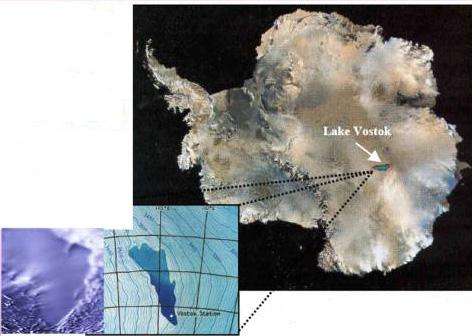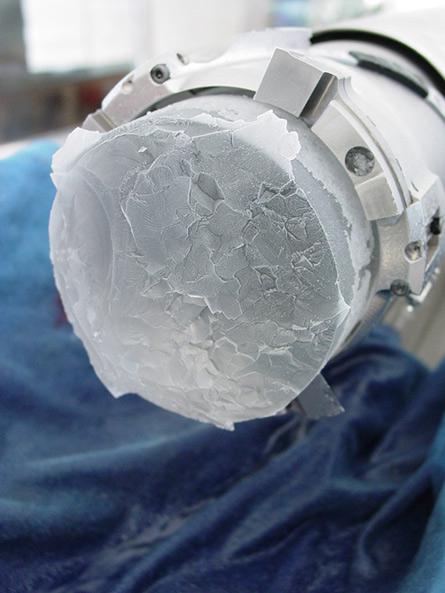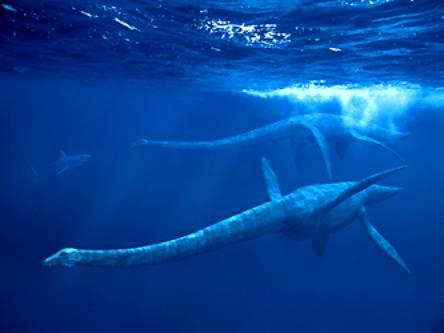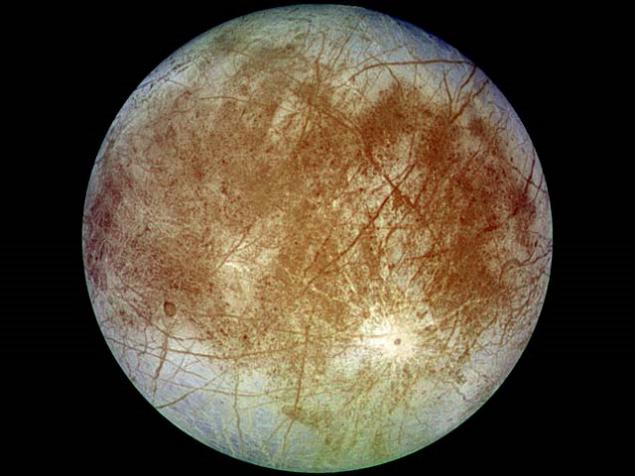Lake Vostok in Antarctica.
 Bashny.Net
Bashny.Net
8 photos + text.
Lake Vostok - the largest subglacial lake in Antarctica. The lake is located near the Antarctic Vostok station under the ice sheet thickness of about 4000 m. Research and seismic measurements showed that Lake Vostok has a huge size. The lake is about 250 km and a width of about 50 km, depth 750 m., The area of 20 thousand square kilometers almost

This frost lake, thick ice is completely cut off from direct contact with the sun, wind and the life on the surface. As the results of thermal scanning the surface, the water temperature in the lake is very high - about 10 to 18 degrees Celsius, which is clearly indicative of the underground heat source. Furthermore, above the surface of water is high, in the hundreds of meters domed vault filled with some air.

Initially, the main purpose of deep drilling was to obtain continuous ice core - a cylindrical column of ice - a kind of cut-off of the glacier, which helped revolutionize the study of all the changes our planet's climate over the past 420 thousand. Years, recorded an accrual in the layers of ice. In 1959 the chief of the station "Vostok" VS Ignatov using thermal drill managed to reach the 40-meter depth. A year later, heat drill constructed IA Zotikov, could pass for 10 meters more. Because of the imperfections of technology to achieve more impressive results then could not - simply drill freezes into ice. The situation changed with the arrival in 1967 of experts Leningrad Mining Institute, who three decades engaged in drilling ice station "Vostok", being able to go deeper into the ice thickness at 3623 m.

However, the ice at depths of 3551 and 3607 brought amazing microbiological data. It was found three species of thermophilic bacteria, analogues of which are developing in the hydrothermal vents of the active regions of the oceans and continents at temperatures of 40-60 ° C. Found bacteria apparently live in hot springs on the lake bottom, using its ability to live only inorganic compounds - hydrogen, carbon dioxide, thiosulfates. Of course, this is only the initial results, but are followed by important and interesting findings that suggest that the hydrothermal activity in the Lake Vostok is mainly determined by the local circulation of melt water in the crust when they migrate down along the faults and fractures at a depth of several kilometers, and then return to the surface of the lake enriched with inorganic compounds serving as a power source of bacteria.

Drilling was carried out to a depth of 3623 m. The samples of the ice age had a depth of about 420 thousand. Years, so it is assumed that the lake was clogged with ice at least 500 thousand. Years ago. Drilling was suspended in 1999 about 120 meters from the proposed surface of the lake, to prevent contamination of water that can damage the unique ecosystem of the lake.

According to information published in foreign sources, in February 2000, two groups of scientists to carry out a joint research program, which is funded by the Government of the United States and Great Britain, intended to lower the water in the lake a special probe equipped with various sensors. But suddenly they all have been instructed to cease work on the program. No explanation for this was not followed. And at the Russian Antarctic stations at the same time supposedly came new contingent of researchers, with whom he had delivered a large number of highly complex and expensive equipment. And it all happened in secret.

In general, the rumors about Lake Vostok go very different, even among explorers. Rumor has it that there are alien craft that are found in the lake for a long time disappeared from the Earth's surface aquatic lizards and some other ancient monsters.

NASA recently tested at the South Pole a special robot for deep drilling of ice. It is designed for the study of glaciers on Europe - Jupiter. Europe, too, is covered with a layer of ice many kilometers under it - the water, and the temperature on the surface of the planet below -70 ° C.. Almost Lake Vostok, only in space. Similar to the East and the ice caps of Mars. And, perhaps, under layers of ice on Europa and Mars, too, is life?
All!

Source:
Lake Vostok - the largest subglacial lake in Antarctica. The lake is located near the Antarctic Vostok station under the ice sheet thickness of about 4000 m. Research and seismic measurements showed that Lake Vostok has a huge size. The lake is about 250 km and a width of about 50 km, depth 750 m., The area of 20 thousand square kilometers almost

This frost lake, thick ice is completely cut off from direct contact with the sun, wind and the life on the surface. As the results of thermal scanning the surface, the water temperature in the lake is very high - about 10 to 18 degrees Celsius, which is clearly indicative of the underground heat source. Furthermore, above the surface of water is high, in the hundreds of meters domed vault filled with some air.

Initially, the main purpose of deep drilling was to obtain continuous ice core - a cylindrical column of ice - a kind of cut-off of the glacier, which helped revolutionize the study of all the changes our planet's climate over the past 420 thousand. Years, recorded an accrual in the layers of ice. In 1959 the chief of the station "Vostok" VS Ignatov using thermal drill managed to reach the 40-meter depth. A year later, heat drill constructed IA Zotikov, could pass for 10 meters more. Because of the imperfections of technology to achieve more impressive results then could not - simply drill freezes into ice. The situation changed with the arrival in 1967 of experts Leningrad Mining Institute, who three decades engaged in drilling ice station "Vostok", being able to go deeper into the ice thickness at 3623 m.

However, the ice at depths of 3551 and 3607 brought amazing microbiological data. It was found three species of thermophilic bacteria, analogues of which are developing in the hydrothermal vents of the active regions of the oceans and continents at temperatures of 40-60 ° C. Found bacteria apparently live in hot springs on the lake bottom, using its ability to live only inorganic compounds - hydrogen, carbon dioxide, thiosulfates. Of course, this is only the initial results, but are followed by important and interesting findings that suggest that the hydrothermal activity in the Lake Vostok is mainly determined by the local circulation of melt water in the crust when they migrate down along the faults and fractures at a depth of several kilometers, and then return to the surface of the lake enriched with inorganic compounds serving as a power source of bacteria.

Drilling was carried out to a depth of 3623 m. The samples of the ice age had a depth of about 420 thousand. Years, so it is assumed that the lake was clogged with ice at least 500 thousand. Years ago. Drilling was suspended in 1999 about 120 meters from the proposed surface of the lake, to prevent contamination of water that can damage the unique ecosystem of the lake.

According to information published in foreign sources, in February 2000, two groups of scientists to carry out a joint research program, which is funded by the Government of the United States and Great Britain, intended to lower the water in the lake a special probe equipped with various sensors. But suddenly they all have been instructed to cease work on the program. No explanation for this was not followed. And at the Russian Antarctic stations at the same time supposedly came new contingent of researchers, with whom he had delivered a large number of highly complex and expensive equipment. And it all happened in secret.

In general, the rumors about Lake Vostok go very different, even among explorers. Rumor has it that there are alien craft that are found in the lake for a long time disappeared from the Earth's surface aquatic lizards and some other ancient monsters.

NASA recently tested at the South Pole a special robot for deep drilling of ice. It is designed for the study of glaciers on Europe - Jupiter. Europe, too, is covered with a layer of ice many kilometers under it - the water, and the temperature on the surface of the planet below -70 ° C.. Almost Lake Vostok, only in space. Similar to the East and the ice caps of Mars. And, perhaps, under layers of ice on Europa and Mars, too, is life?
All!

Source:
Tags
See also
Medusae lake declared an Underwater wonder of the world
Mysterious Antarctica
Lenin in Antarctica already '54
The beauty of our Earth
Antarctica. Mysteries
FREEZE: Minsk 1953 in color
5 amazing lakes in Russia (25 pics)
Lake Ala-Kul
Lake Kelimutu

















